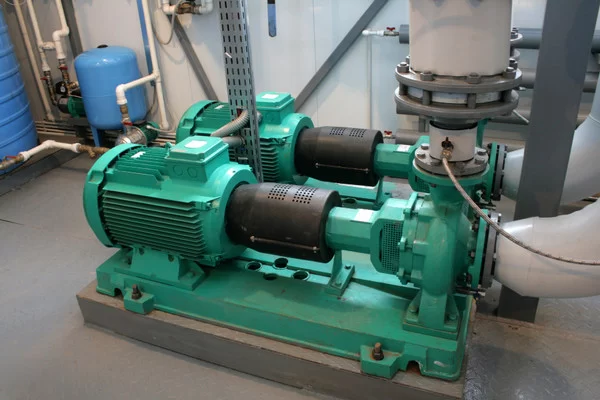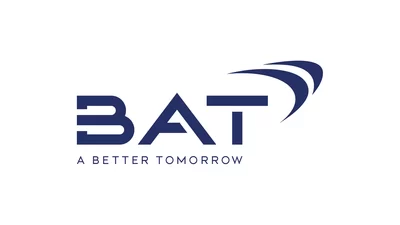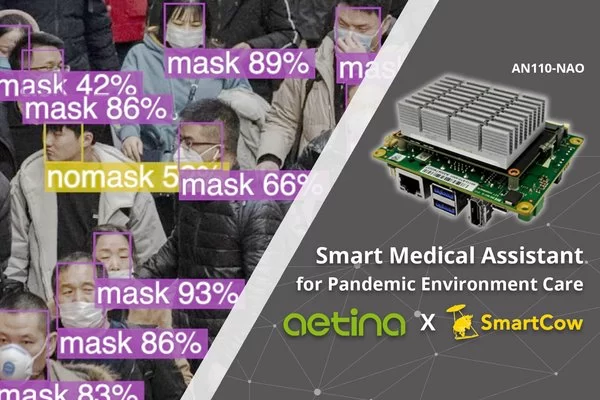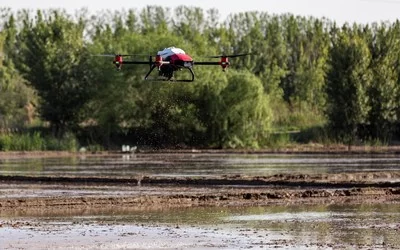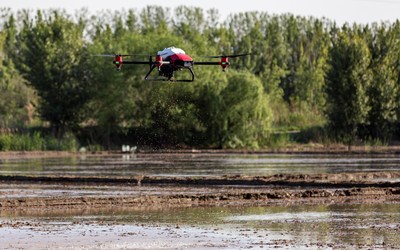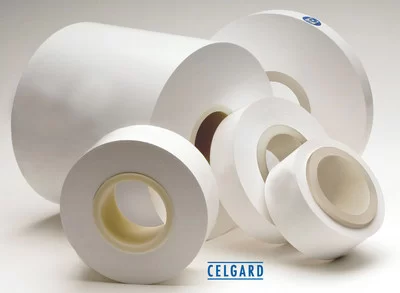A large portion of pump OEMs’ growth will be driven by services in the next 5 years SANTA CLARA, California, July 3, 2020 — Frost & Sullivan’s recent analysis, 2025 Vision: Future of Pumps in a Connected World, finds that an average of 50% to 60% of pump original equipment manufacturers’…
Körber Unveils Next-Generation Sorter for Supply Chain Automation
Körber Crossbelt Sorter enhances depth and breadth of supply chain solutions with complete materials handling portfolio HAMBURG, Germany, July 2, 2020 — Körber, the global supply chain technology leader from software to materials handling automation, today unveils the Körber Crossbelt Sorter. The latest addition…
BAT Named in The Gartner Supply Chain Top 25 for 2020
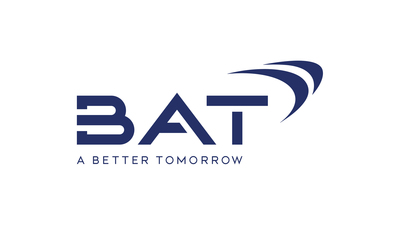 |
BAT believes company transformation and focus on ESG has driven elevation to 21st position.
LONDON, June 11, 2020 /PRNewswire/ — BAT has been recognised by Gartner in The Gartner Supply Chain Top 25 for 20201 ranking for the first time. The ranking identifies supply chain leaders and BAT has moved from outside the 25th position to 21st position in 2020. BAT believes this reflects the great progress in its supply chain maturity journey, its strong financial performance and the fact that ESG is front and centre of everything BAT does, particularly in relation to the company’s supply chain.
Alan Davy, BAT Group Operations Director, said:
"We are delighted to receive this recognition which I believe is confirmation of our efforts to deliver a world-class supply chain as part of our journey towards A Better Tomorrow. To us, it not only acknowledges the achievements of our colleagues who have succeeded in transforming our business, but also the partners, suppliers and communities we work alongside.
"The supply chain integration and synchronisation steps taken over the last few years built greater Resilience and Agility. Furthermore, Sustainability is front and centre of everything we do – it sits at the heart of our supply chain, has driven many of the investment decisions we have made, and will be a key element of our plans for the future as we build on this success."
In recent years, BAT has implemented a single ERP platform, has invested in building people’s capabilities, as well as increased automation of certain business processes. Crucially, the quality of data the company now uses for decision making has been transformed. AI and Machine Learning based platforms have been used to improve how BAT’s transportation and logistics networks are managed. This has built additional resilience and much needed agility and has contributed to the way BAT continues to navigate the Covid-19 situation. Further improvements and efficiencies are planned for 2020 and beyond.
According to Gartner, "three key trends stand out this year for these leaders that are accelerating their capabilities, separating them further from the rest of the pack."
Purpose-driven organisations
"Even before the pandemic occurred, supply chain teams at leading companies defined their work using the language of purpose. These companies recognize that solving the world’s largest problems only works through partnership with others in the broader community, as well as through their own radical transparency."
Business model transformers
"One of the largest external forces impacting corporate supply chains is a dynamic competitive landscape that is driven by a combination of expanded customer expectations, new market entrants from existing industry ecosystems and the emergence of non-traditional competitors." Further, "leading supply chains have positioned themselves as the disruptors to traditional business models, either through reinvention of their offerings and the ability to deliver them or by acquiring start-ups that offer the expertise and DNA necessary to compete in new and reinvented markets."
Digital orchestrators
"Leading companies on the Supply Chain Top 25 are early, and frequent, adopters of digital technologies. More importantly, these investments enable business capabilities and outcomes that allow them to thrive in even the harshest economic conditions."
The Gartner report states that:
"In our 16th edition of the Supply Chain Top 25, we have an impressive group of leaders with new lessons to share, including a diverse set of six new entrants." It further mentions that, "with substantial portions of the economy closed due the COVID-19 pandemic, we are seeing unemployment and negative economic growth rates on a scale not seen since the early 20th century in some cases." Further, "leaders need an agile, or adaptive, strategy that allows the supply chain organisation to sense and respond to changes in the business context as they happen."
Regarding the Supply Chain Top 25 Methodology, Gartner states, "the ranking comprises two main components – business performance and opinion. Business performance, in the form of public financial and ESG data, provides a view into how companies have performed in the past. The opinion component offers an eye to future potential and reflects leadership in the supply chain community. These two components are combined into a total composite score. We derive a master list of companies from a combination of the Fortune Global 500 and the Forbes Global 2000. In an effort to maintain the list of companies evaluated at a manageable level, we apply a general annual revenue threshold of $12 billion."
Gartner, "The Gartner Supply Chain Top 25 for 2020", Mike Griswold et al, 19 May 2020
1. Gartner subscription required
Aetina x SmartCow: Introduce Medical Assistant for Pandemic Environment Care
TAIPEI, May 28, 2020 /PRNewswire/ — Healthcare system is the foundation of human being culture, every innovative medical research shows its supports and values to continue and expand. The world is suffering from COVID-19, AI developers seek a medical assistant to maintain the healthcare system. Aetina Corporation, a GPGPU and edge AI computing solution provider, and AI solution developer, SmartCow Co. Ltd. cooperated building an algorithm with six types of AI models that based on the edge computing platform.
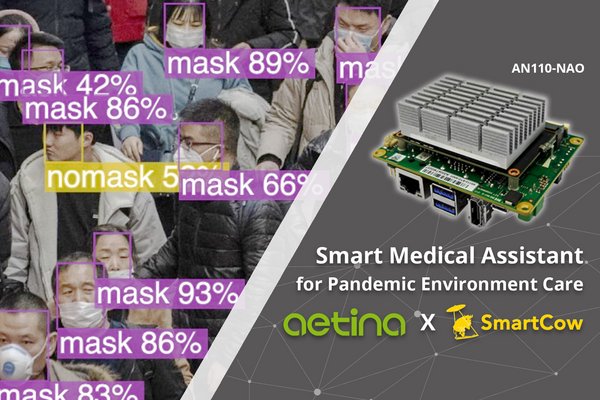
Aetina x SmartCow: smart medical assistant for pandemic environment care, powered by edge AI computing platform
Edgar, an AI-powered healthcare assistant built-up with Aetina AN110-NAO platform, developed for a safe work environment and patient care. In public, AI should build in original equipment or other machines most efficiently, AN110-NAO sized perfectly, with 87.4×67.4×46 mm (with fan). Various I/O support is an excellent way to build a tight and one single solution. The AN110-NAO platform, which is ready for common I/O, includes the I2S slot that brings audio out, which is suited for Edgar’s application environment, set for warning modules. Meanwhile, camera supports are the core visual AI solution. The platform supports MIPI CSI-II interface 1x 4k or 2x FHD cameras. Not only landed-ready but also fulfill demands from Edgar – high-resolution images bring accurate reality recognition.
Edgar supports six types of AI models, like social distance estimation, masks detection, and safe sneeze action classification. Among these functions, Edgar creates a safe environment in times of medical emergencies, assist the front-line medical staff in preventing the respiratory disease. For example, one of Edgar’s ability is face-mask recognition. It can be set up easily in access and provide guidance and direction to mask dispenser machines before differentiating the mask-wore to enter the premises. The types of face mask covered PPE, N95 and surgical. Another specialty of Edgar is social distancing detection; the device could combine with a policy network and keep public activity in 6 feet between 2 people.
In the data explosion era, security and privacy is the first concern. Edgar is GDPR compliant. Images will be processed and remain on the edge system; no data will transfer to the cloud. It is well-prepared for the public and ready to assist the market. Besides, Aetina Jetson series serve comprehensive, experienced R&D advise and edge AI ecosystem prop for AI development.
To reach more detail by visit Aetina website: www.aetina.com or contact them at [email protected].
Photo – https://photos.prnasia.com/prnh/20200525/2812501-1?lang=0
Related Links :
http://www.aetina.com
Automated Farming: XAG Introduces Rice Seeding Drone to Mitigate Labour Shortage
GUANGZHOU, China, May 27, 2020 /PRNewswire/ — With the farming population decreasing and growing older, the global food system now faces great uncertainty especially when the covid-19 pandemic exacerbates labour shortages. Its potential havoc can somehow be avoided by the integration of automation technologies. To overhaul the labour-intensive rice farming industry, XAG is scaling up drone applications in China that enable night-time seeding at peak period.
Drones Sowing Seeds for Aging Farmers
On 13 April 2020, XAG organised the world’s first-ever rice direct seeding demonstration on the comparison between manual broadcasting and drone seeding. The operation was conducted in China’s ‘Happy Farms’, one of the largest modern agricultural parks as well as smart agriculture demonstration site in Guangdong province. Two workers were invited to spread 5kg of rice seeds, walking slowly through the waterlogged paddy field with their feet swamped in the mud. This was a laborious and lengthy process, which took them 25 minutes to cover 1,200 square metres of land.
Then XAG’s drone followed a pre-programmed route and dispensed rice seeds from the air. With JetSeed granule spreading system, it finished the same amount of work in only two minutes. One XAG agricultural drone can seed 50,000 square metres of land per hour, which would otherwise take 50 to 60 field workers to complete. Happy Farms has just introduced XAG’s autonomous drones to replace manual labour for seeding, fertilisation, and crop spraying.
Many other farms in China, however, are still haunted by the problem of labour dependence, which has increased their vulnerability to the aging farming population. According to National Bureau of Statistics, China’s rural population has substantially reduced by 23% in the past two decades, while those aged over 55 constitute one third of the agricultural workforce. When the older generation of farmers retire and young people pour into the cities for better employment, the future of food supply seems unsecure if counting on manpower.
Direct Seeded Rice Planted at Night
Direct seeded rice (DSR) refers to the process of sowing seeds directly into the fields without nursery cultivation and transplantation. As a more sustainable alternative to conventional transplanting, it avoids deteriorating soil health and intensive water use. However, DSR can only be conducted either by hand or use of large ground machinery in the past.
Unlike the large-scale agriculture economies, most Asian countries with rice as their staple crop cannot resort to large automated machinery such as driverless tractors, because of the complex terrains, small size of many farms and high costs. This is where the nimble, agile drones can unleash their full potential to empower the rice farmers toiling on the land. For example, XAG’s agricultural drone can not only be utilised to spray crops to ward off pests and diseases, but it can also distribute rice seeds directly into the paddy fields without seedling transplant.
JetSeed is an intelligent granule spreading system mounted on the bottom of XAG agricultural UAS, to endow the drone with new function of direct rice seeding. After simple parameter set-up on app, it generates high-speed airflow to project proper amount of seeds accurately into the targeted topsoil. Such mechanism is designed to maintain optimum spacing and uniform plant density. Compared with manual broadcasting and traditional sowing machine, drone seeding proves to achieve higher seedling rate and lodging resistance as important factors of a bumper harvest.
Chinese farmers also start embracing night-time drone seeding to resolve severe labour shortfall during the busy planting season. Li Qisheng, a drone operator in Anhui, China, has turned on night operation mode this May to meet the increasing demands for autonomous direct seeding. "There are two major advantages of seeding at night by drones. First, aerial spreading is more precise and even after sunset when it is usually less windy than during daytime. Second, by extending the operational period, it helps farmers avoid missing the planting season." XAG agricultural UAS is the only drone in the industry which can operate safely days and nights.
Stabilise Food Security under COVID-19 Pandemic
XAG has made a great leap forward by taking drone seeding technology from experimental stage to commercial adoption across China’s main rice planting areas. Since April 2019, XAG’s drone direct seeding solutions have been applied to over 650 million square metres of rice fields in China’s 11 provinces. It is helping both smallholders and large farm owners to resolve common challenges such as operational inefficiency, aging crisis, and shortage of field workers.
When COVID-19 loomed over the spring planting season, XAG has mobilised farmers to adopt seeding drones as prompt response to rural workforce shortages. Despite the economic disruption, China’s agriculture has witnessed a robust performance with 3.5% year-on-year increase in the added value of the planting industry, according to the Ministry of Agriculture and Rural Affairs. To feed 1.4 billion people with enough staple food, China this year plans to cultivate 4.6 million hectares of early rice, raising by 0.2 million hectares from last year.
However, although the global food system remains well functioning at this moment, the lack of agricultural workforce might undermine future production and supply of food, warned by the UN Food and Agriculture Organisation (FAO). Many countries are now struggling to mitigate their labour-deficit in seasonal migrant workers, for example, 80,000 farming jobs needs to be filled while that number in Germany reaches to 300,000. With such urgent labour challenges, the shift to automation, powered by smart agtech such as drone, becomes more imperative in the coronavirus age.
Related Links :
http://www.xa.com
United Kingdom High Court of Justice Grants Celgard an Interim Injunction Against Senior Preventing the Importation of Battery Separators Into the UK
CHARLOTTE, N.C., May 12, 2020 /PRNewswire/ — Celgard, LLC (Celgard), a subsidiary of Polypore International, LP (Polypore), recently filed an application for an urgent injunction against Shenzhen Senior Technology Material Co., Ltd. (Senior) in the High Court of Justice in London,…



